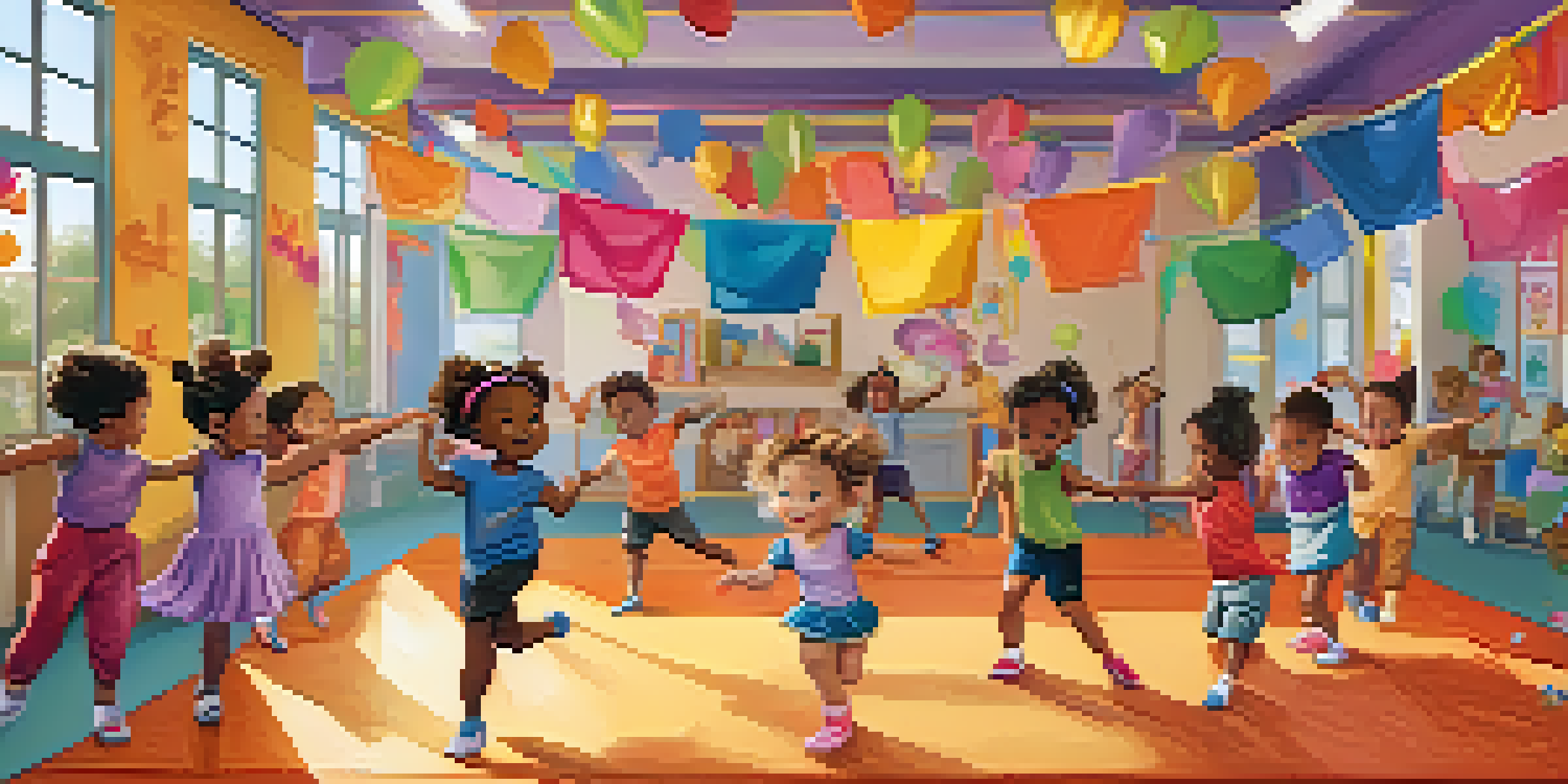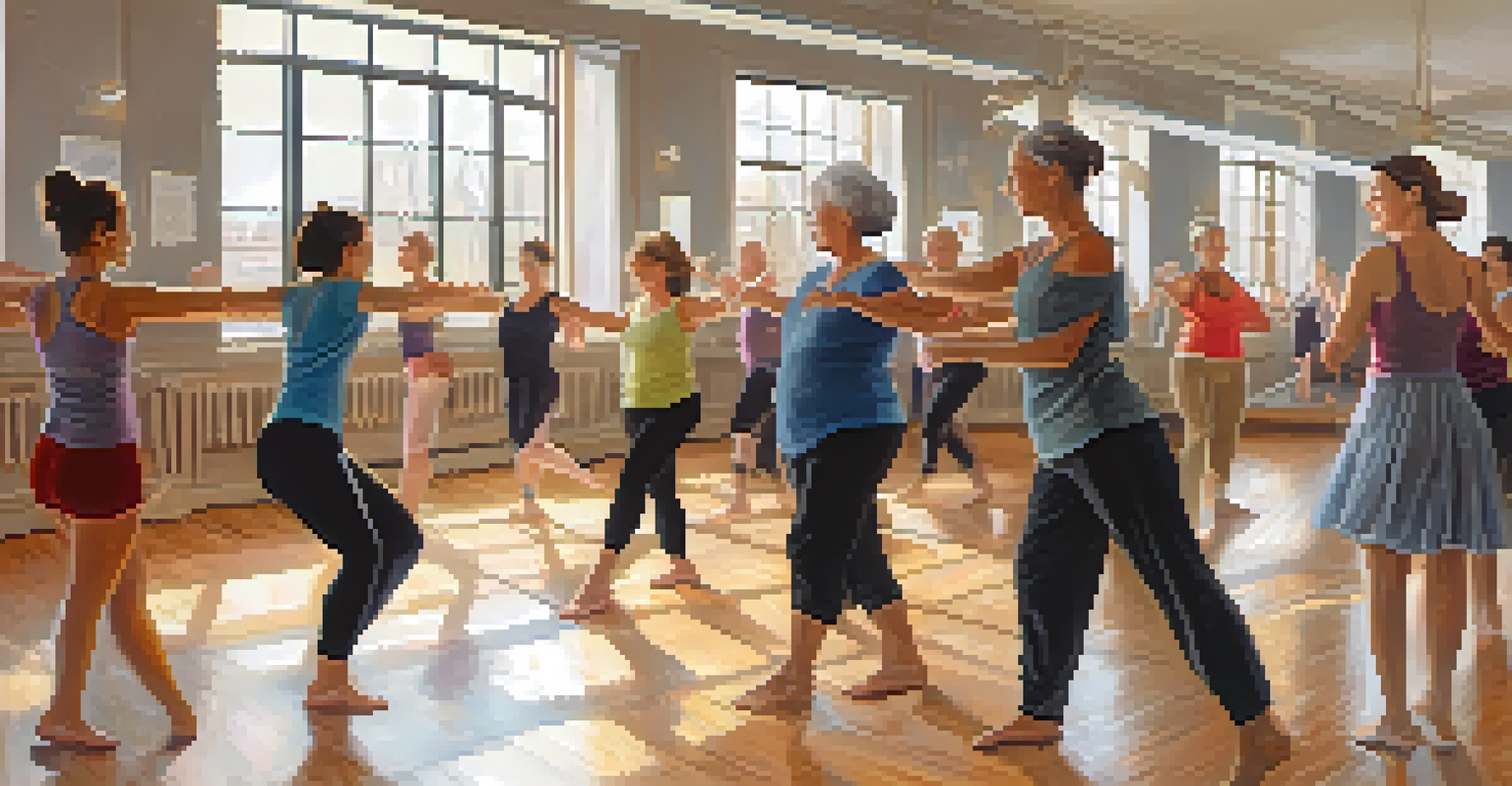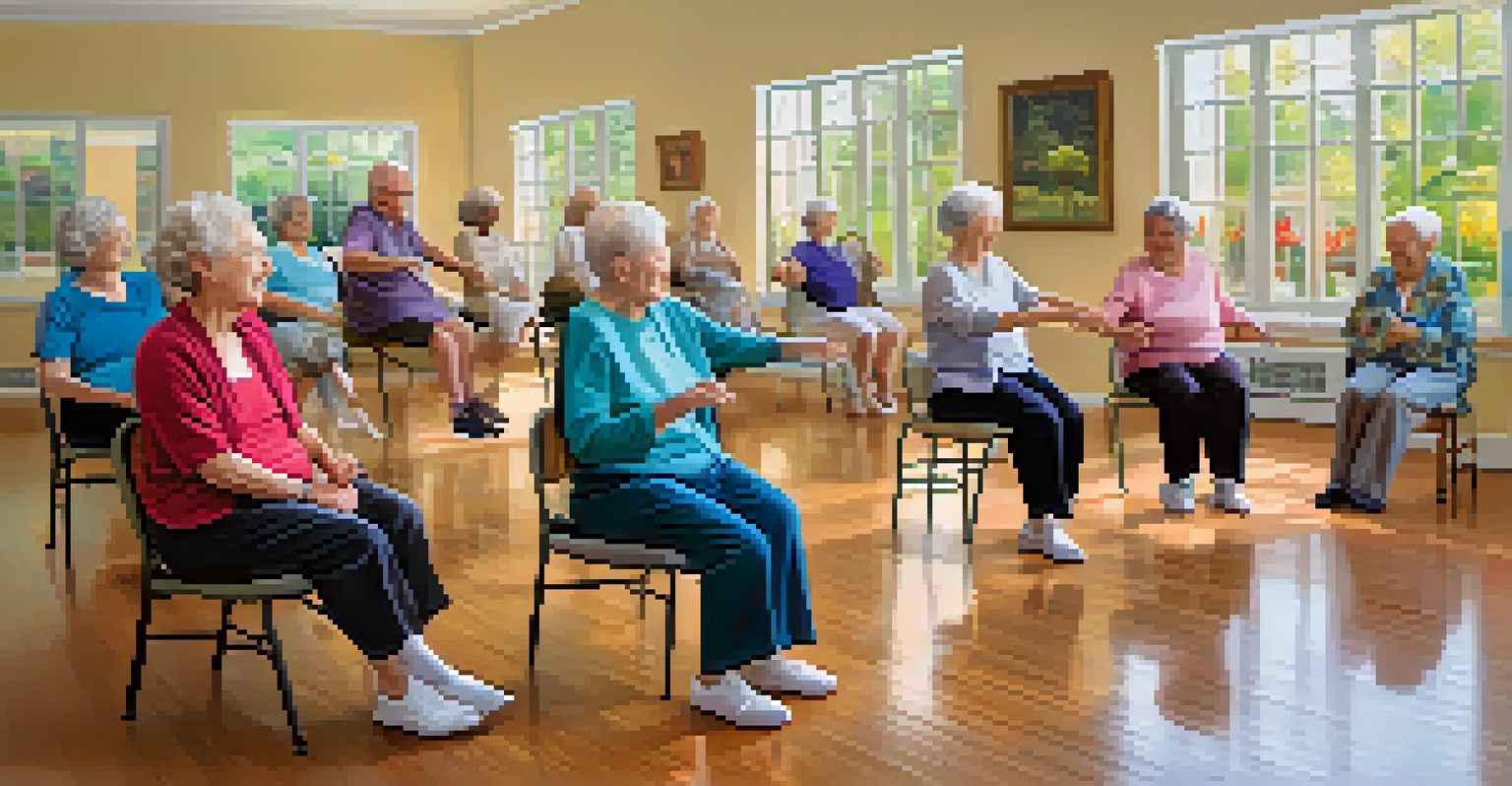Adapting Dance Techniques for Different Age Groups and Levels

Understanding the Importance of Age-Appropriate Dance
Dance is a universal language that transcends age, but techniques must be adapted to fit different developmental stages. For instance, young children benefit from playful movements that enhance their motor skills, while older adults may need gentler approaches to accommodate physical limitations. Understanding these nuances is crucial for creating enjoyable and safe dance experiences.
Dance is the hidden language of the soul.
Moreover, age-appropriate dance helps foster a love for movement that can last a lifetime. When children engage in fun, interactive dance, they're more likely to develop a passion for the art. Similarly, older adults who feel comfortable and confident in their movements are more likely to stay active and engaged in their communities.
Ultimately, adapting dance techniques to suit varying age groups ensures that everyone can experience the joy and benefits of dance, regardless of their starting point or physical condition.
Tailoring Techniques for Young Children
When teaching dance to young children, it's essential to incorporate imaginative play and creativity. Simple techniques like using animal movements or storytelling can capture their attention and encourage expression. For example, asking them to 'dance like a butterfly' can make the experience both fun and educational.

In addition, focusing on basic motor skills through games and group activities helps build coordination and social skills. This age group thrives on encouragement, so positive reinforcement plays a vital role in boosting their confidence and enthusiasm. Engaging them in a supportive environment can significantly enhance their learning experience.
Dance Must Suit All Ages
Adapting dance techniques for different age groups ensures safe, enjoyable experiences that foster a lasting love for movement.
Finally, it's important to keep lessons short and dynamic to match their limited attention spans. Incorporating a variety of music and movement styles will keep them excited and eager to participate.
Adapting Dance for Adolescents and Teens
Adolescents and teens are at a stage where they seek self-identity and expression, making it crucial to provide opportunities for creativity in dance. Encouraging them to explore various styles—like hip-hop, contemporary, or jazz—can help them discover their unique voice. This age group thrives on collaboration, so group choreography projects can be particularly engaging.
To watch us dance is to hear our hearts speak.
Moreover, it's essential to address the physical changes they experience during this time. Techniques should be mindful of their growing bodies, focusing on strength, flexibility, and injury prevention. Incorporating strength-building exercises can empower them and improve their overall performance.
Creating a safe and inclusive atmosphere where teens feel comfortable sharing their ideas will encourage them to take risks in their dancing. This not only boosts their confidence but also fosters a sense of community among peers.
Focusing on Adults: Recreational Dance Classes
For adults, dance can serve as a fantastic outlet for stress relief and social interaction. Tailoring dance techniques to accommodate various fitness levels is key. For instance, offering beginner classes that focus on basic movements can help newcomers feel comfortable and confident.
It’s also beneficial to include modifications for those with physical limitations, ensuring that everyone can participate at their own pace. Providing options, such as seated dance or low-impact routines, allows individuals to enjoy the benefits of dance without feeling overwhelmed.
Inclusivity Enhances Dance Classes
Creating inclusive dance environments allows individuals of diverse backgrounds and abilities to feel valued and engaged.
Additionally, creating a community atmosphere encourages regular attendance. Social events or showcases can help adults connect and celebrate their progress, fostering a sense of belonging.
Dance Techniques for Seniors: Gentle Movement Practices
Seniors often seek dance as a way to maintain mobility and enhance their quality of life. Gentle movement practices, such as chair dancing or tai chi-inspired routines, can be particularly beneficial for this age group. These approaches focus on flexibility, balance, and coordination without the risk of injury.
Engaging in dance can also boost mental health, as it provides opportunities for social interaction and cognitive stimulation. Classes that incorporate familiar music can evoke positive memories, making the experience even more enriching.
It's essential to prioritize safety by ensuring a supportive environment, with modifications available for those with physical challenges. This way, seniors can enjoy the joy of dance without worry.
Creating Inclusive Dance Environments
Inclusivity in dance is crucial for fostering a welcoming atmosphere for all age groups and abilities. This means considering diverse backgrounds, experiences, and physical capabilities when designing classes. Offering a variety of styles and formats, such as hybrid online and in-person options, can help reach a broader audience.
Promoting an inclusive environment also involves training instructors to be sensitive to the needs of all participants. They should be equipped with the skills to adapt techniques on the fly and provide individualized support when necessary. This creates a space where everyone feels valued and encouraged.
Technology Transforms Dance Learning
The use of technology in dance education provides flexible, accessible resources that cater to various skill levels and learning preferences.
Furthermore, involving participants in class decisions—like selecting music or themes—can enhance their sense of ownership and engagement. Inclusivity not only benefits the dancers but also enriches the overall dance community.
The Role of Technology in Dance Education
Technology has transformed the way dance is taught and learned across all age groups. Online tutorials, virtual classes, and dance apps provide resources that cater to various skill levels. For instance, a beginner might enjoy following a YouTube channel dedicated to introductory dance techniques.
Moreover, technology can enhance accessibility for those unable to attend in-person classes. Live-streaming classes or offering recorded sessions allows individuals to learn at their own pace and comfort. This flexibility is especially beneficial for busy adults or seniors who prefer practicing from home.

Incorporating technology also opens doors for creative expression. Dancers can record and share their performances, receiving feedback from peers and instructors alike. This dynamic interaction can motivate participants to continue their dance journey.
Conclusion: Embracing the Diversity of Dance
Adapting dance techniques for different age groups and skill levels not only enriches the dance experience but also fosters a deeper appreciation for the art form. By understanding the unique needs of each demographic, instructors can create engaging, inclusive classes that inspire movement and joy. Dance is a celebration of diversity, and everyone deserves a place on the dance floor.
As we embrace the diversity of dance, we also promote the idea that it’s never too late to start dancing. Whether someone is a young child or a senior, the opportunity to express oneself through movement is always available. This universal aspect of dance makes it a powerful tool for connection and self-discovery.
Ultimately, by adapting techniques and creating supportive environments, we contribute to a vibrant dance community where individuals of all ages and abilities can thrive.